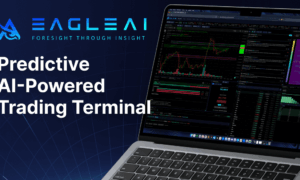In 2025 and beyond, iOS is no longer confined to just iPhones or iPads. It is a cross-device ecosystem spanning Vision Pro, Apple Watch, CarPlay, and even ambient edge computing environments.
What used to be “app updates” has now become architectural upgrades. Swift is morphing into a more expressive language with better support for AI workflows. VisionOS is rewriting how humans interact with devices through eyes and gestures rather than taps. And with the rise of on-device machine learning, apps are becoming more predictive, more personal, and vastly more immersive.
So, if you’re a startup founder, tech strategist, or decision-maker evaluating the future-readiness of your iOS app, understanding these upcoming trends can help you make your iOS app future-ready.
1. VisionOS & Spatial Computing are Redefining UI/UX Concepts
Apple introduced VisionOS, throwing new light on iOS and beyond. Interaction no longer depends on flat screens and static gestures: iOS apps interface with immersive environments where depth, space, and context define interaction. For an iOS developer, this means the gradual phasing out of traditional view controllers to designing interfaces that feel natural in AR and mixed reality.
The first apps for the Vision Pro demonstrate that such standards as fluid interaction, eye tracking, and gesture-based navigation will be the expected norm. There is now a new realm of app engagement for businesses to explore, especially in industries like education, retail, fitness, and telehealth.
2. AI-First Architectures Cannot be Ignored Anymore
Since Apple has given prioritization to on-device ML (through Core ML and Create ML), contextual intelligence, personalization, and anticipatory design will mark the next wave of iOS apps.
Whether it is predictive text, an adaptive UI, or dynamic content delivery, apps are supposed to learn, grow, and optimize in real-time- the ones that can do that are going to be on top. If you’re a custom app development company, it is about time that you also started to consider AI integration in architecture and in UX thinking as a default.
3. Swift 6.x: Greater Performance, Greater Flexibility
The latest Swift update by Apple is great momentum toward the future of iOS and mobile app development services in terms of speedy, safe programming and scalable product delivery. Swift 6.x is set to provide new concurrency models, improved error handling, and transparent async/await constructs.
Swift 6 reduces overhead and increases long-term reliability for enterprise-level builds or large-scale apps; hence, any forward-thinking iOS app development company must be investing in the knowledge of Swift to future-proof its pipelines.
4. Modular Development and Clean Architecture (MVVM, VIPER)
As iOS apps grow in complexity, clean and modular architecture pattern designs such as MVVM, VIPER, and Clean Swift are increasingly becoming essential. These patterns enable faster updates, easier testing, and more reliable cross-team collaborations, especially for enterprise or highly trafficked apps. Architectural patterns keep the app agile in this fast-changing ecosystem, enabling swift acceptance of any new Apple API or UI paradigms without refactoring the codebase.
5. Cross-Device Continuity Is the New Standard
iOS apps are no longer confined to a single screen. Users trust seamless experiences from iPhone to iPad, Apple Watch, Mac, and now Vision Pro, including shared authentications, synchronized preferences, Handoff experiences, and design adaptability across the platform.
Enterprises that build on that standpoint will see great user engagement and retention. The future of apps is ultimately oriented towards understanding users across contexts and not sessions.
6. Privacy-First Engineering Becomes a Brand Advantage
On iOS, privacy has become a differentiator ever since the introduction of App Tracking Transparency, on-device processing, and data sandboxing. Apps that respect user data but also allow intelligent experiences will be considered more trustworthy and premium. Whether it’s encrypted health data, edge-only AI processing, or transparent permission flows, privacy-by-design will set the future leaders apart.
7. Backendless and Low-Code Tools Are Powering MVPs Faster
There is an upsurge in backend-as-a-service platforms (Firebase, Supabase, and Backendless). An iOS developer would probably have the fastest back end prototype spin-up time ever.
The greatest times are slashed in half for MVPs along with SwiftUI, Xcode Cloud, making it also less costly to bargain a fit in the market. This works best for startups where relationships with iOS app development partners matter.”
Final Thoughts
Now that everything moves so fast in the digital economy, being updated is no longer enough; one must be at least adapting to whatever is next to ensure survival. The trends that are pushing iOS developments right now are not just passing innovations; they are going to set forth the new baseline for competitive apps.
Hence, whether you’re a startup polishing your MVP or an enterprise trying to expand its ecosystem over Apple’s platforms, your success will somehow rely on how well you support your app vision with these irreversible shifts. Therefore, if you want to build a future-ready iOS app, you must work with a professional iOS app development company like RipenApps that stays up-to-date with the latest trends.































